Sony Bravia KDL-60LX903 Review
Sony Bravia KDL-60LX903
It's Sony's flagship 3D-enabled LCD television, but is it all good stuff from the LED-lit 60in whopper?
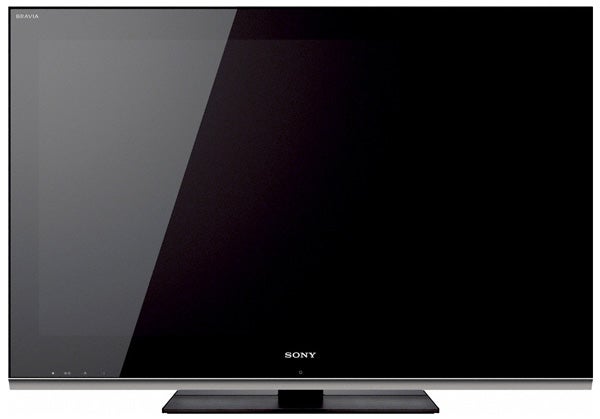
Verdict
Key Specifications
- Review Price: £4499.00
It usually takes a few lines at the start of a review to properly contextualise a new TV. But with the Sony Bravia KDL-60LX903 all we need say is this: it’s Sony’s flagship TV, and it knows it is.
Everything about it shrieks ‘no expense spared’ – including, it has to be said, its intimidating £4,500 price tag. Its design, for instance, is the ultimate expression of Sony’s new Monolithic style: a towering black-edged, one-layer screen with surprisingly little back end, set low on its stand (if you use it) and with its monolithic presence amplified by the sheer acreage of its 60in screen.
The appearance of a sliver of silver along the bottom edge actually feels a touch incongruous in the presence of so much minimalist blackness. But make no mistake about it: this is a fine looking TV.
It’s also pleasing to find that Sony has treated the 60LX903’s design in a ‘360-degree’ fashion. For as well as being finished almost as glossily as the fascia, the rear goes to great pains to hide as many connections as possible behind clip-off panels. What’s more, these connections are all positioned for side-entry, which is massively helpful to people wanting to wall-hang the TV.
The volume of connections available is almost as impressive as their arrangement. The increasingly inevitable four HDMIs leads the way – all built to the v1.4 standard we’d expect given that the 60LX903 carries integrated 3D playback technology. But the 60LX903 is also seriously well geared up for multimedia, with a USB port able to play the most commonly used video, photo and music file formats, plus an Ethernet port for accessing DLNA PC content, future Freeview HD interactive features, and Sony’s Bravia Internet Video online platform.
There’s also one further handy connection you can’t see: built-in Wi-Fi. It’s really refreshing not to have to stump up for an extra USB Wi-Fi dongle – and frankly no more than we would expect of a £4,500 TV.
Also built in is the set’s 3D transmitter. You don’t have to pay extra for an external transmitter kit like you do with the recently reviewed 40HX803. Happily Sony has even run to providing a couple of its standard (adult-sized) 3D active shutter glasses with the TV, complete with soft carry cases.
Turning our attention to what’s going on inside the 60LX903, we find that, as expected from the TV’s slimness, it uses edge LED lighting technology. The screen is made from one of Sony’s OptiContrast panels for filtering out reflections, too, with pictures driven by quite a heady brew of video processing.
This includes the inevitable Bravia Engine 3 (BE3) system with its particular talents for scaling and detail enhancement; Sony’s Live Colour system for producing more natural and dynamic colours; and MotionFlow 200Hz PRO, which delivers four times the number of images you’d get with a 50Hz TV plus backlight blinking to counter LCD’s traditional motion blur and judder issues. Blur, in particular, can be quite unnerving if it appears in a 3D environment, so Sony is right to focus so much effort on it with the 60LX903.
Dedicated TrustedReviews readers may remember that back in May of last year, Sony launched a TV, the KDL-40WE5, with a built-in Presence Sensor. This used a combination of motion and heat detection to tell if anyone was in the room watching the TV, turning the picture off to save energy/money if it detected nobody was watching.
This gimmicky sounding but surprisingly accurate system returns in the 60LX903, but with considerable knobs on. For now, rather remarkably, it actually includes face detection technology, so that it doesn’t just know that somebody is watching the TV, but who that somebody is. Even more uncannily/unnervingly, the 60LX903 can connect your face to the sort of programmes you like watching on the Freeview HD tuner, and then make recommendations of programmes you might be interested in based on your past viewing habits!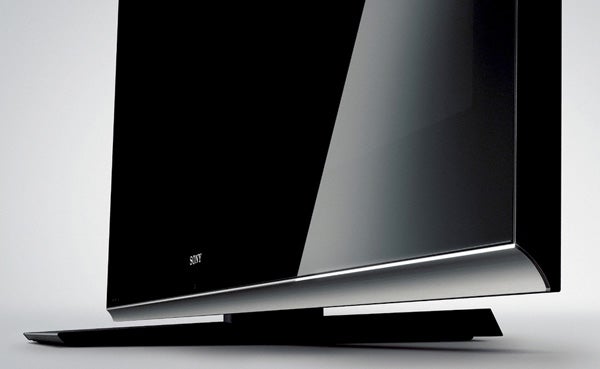
Other tricks of the Presence Sensor system include the option to have the screen turn off and sound a warning if a child gets too close to the screen, and even a system that adjusts the picture and sound in response to your seating position relative to the screen.
Most of these features really do work, too. The programme recommendations thing was a little random at times, but we guess it would improve TIVO-style the longer we had the TV for. And the thing that adjusts the picture and sound in response to your viewing position didn’t always seem to make choices we totally agreed with. But all in all there’s some clever stuff going on here.
The only feature we had to leave off was the Distance Detection tool, which for some reason kept producing a proximity warning even when neither we nor our kids were anywhere near the screen.
One last feature we should give a little more space to before getting into the all-important performance section is Sony’s Bravia Internet Video platform. This really is an excellent feature for Sony, providing as it does the most comprehensive suite of streaming video – with very stable delivery – in the TV world right now. Highlights include LoveFilm, Demand Five, and the recently added BBC iPlayer.
Starting out with the 60LX903’s 2D pictures, we were quickly very impressed. There’s a tangible, almost touchable sense of solidity and detail with HD material, emphasised by the enormity of the 60in screen.
HD pictures are strikingly noiseless too – a fact that’s made all the more impressive when you consider how few hiding places there are for different noise types on a screen of this size.
Then there’s the screen’s colour palette, which is vibrant and dynamic, but also superbly expressive in the range of tones it can produce, and effortlessly subtle when it comes to rendering the tiniest of colour shifts. This latter point means striping around light sources and blocking over skin tones are both non-issues unless they’re already present in a poor quality source.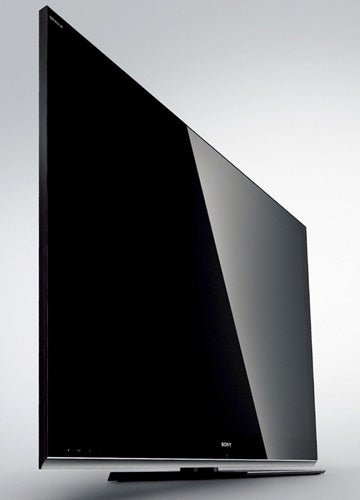
Another impressive achievement of the 60LX903 concerns its motion handling. Playing with the various MotionFlow settings the set reveals the full extent of Sony’s efforts in this area, with the Clear Plus setting really darkening the image down as the blinking backlight element of the system gets used to its fullest extent. Motion in this mode really does look superb: sharp, fluid but still natural. And all while generating no more visible unwanted side effects than the considerable reduction in brightness.
If you’ve got your 60LX903 set up in a blacked out room, we’d say stick with the Clear Plus Motion flow setting for much of the time. Though for most normal living room situations Clear will probably feel the better option.
Thanks in no small part to the excellent motion handling, the 60LX903 also delivers HD images with impressive clarity and pixel-level fine detailing. Even the 60LX903’s standard definition pictures don’t look at all bad, with the BE3 engine upscaling things well enough that they don’t look excessively noisy or soft despite being stretched to 60 inches.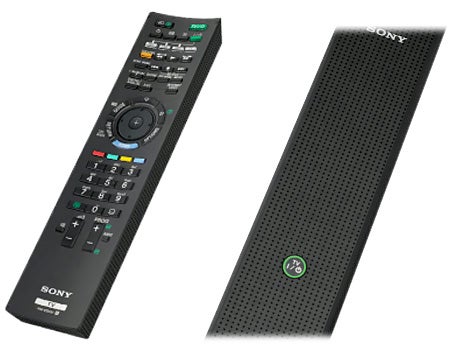 (centre)”’The KDL-60LX903’s remote control and its rear-mounted on/off button”’(/centre)
(centre)”’The KDL-60LX903’s remote control and its rear-mounted on/off button”’(/centre)
The set’s black level response is pretty good, meanwhile – despite this being a common weakness of edge LED TVs. There’s more greyness over black areas and slightly more backlight inconsistency than you’d get with a direct LED screen, for sure. But provided you’re not sat off to the set’s side and you’ve got the backlight set no higher than four, these problems shouldn’t trouble you too much.
Other smallish issues are a bit of ghosting around sharply contrasted edges during standard def viewing, and some rather overt brightness ‘shifts’ if you set the advanced contrast tool any higher than its ‘Low’ setting.
One last key point is that provided you engage its Game picture preset, the 60LX903 appears to be an excellent gaming display. We detected little to no input lag during our tests, and the sharpness and dynamism of the pictures on show were a joy to behold – even with a game as dark and tough to show as Alan Wake.
Now to what we guess is probably the 60LX903’s main event given its price: its 3D playback. And tragically, it’s hugely disappointing.
There’s one solitary reason for this, and regular readers will be able to predict what it is: the dreaded crosstalk noise. All too often objects appear in the 60LX903‘s 3D images – be they on Sky’s 3D channel or a 3D Blu-ray – with ghosting around them, distracting you from what you’re watching and generally making the image look imprecise and even confusing.
In fact, the ghosting on the 60LX903 looks worse than we’ve seen it on any other 3D TV to date. This may just be because the screen’s huge size reinforces a general problem with crosstalk on Sony TVs, but remembering our rather more enjoyable 3D experience with Sony’s KDL-40HX803, it feels like something else is going wrong too. The bottom line is that the ghosting is so consistent and severe that it reminds us of our early distinctly underwhelming impressions of Sony 3D TVs at industry shows in 2009.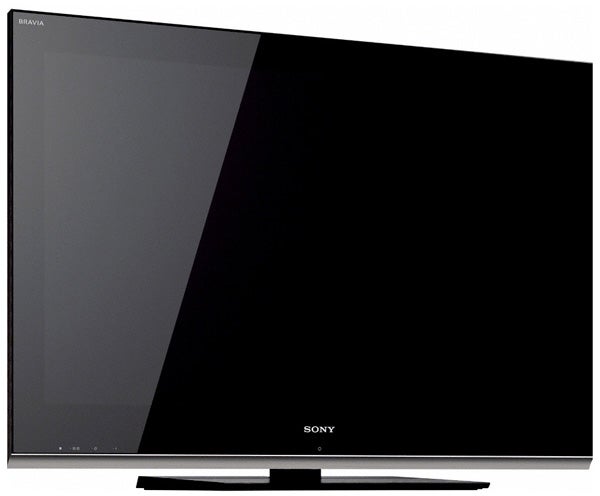
As if to rub our noses in it, the 3D images behind this ghosting are actually pretty spectacular if you bother to look. Detail levels in particular are outstanding, even with Sky’s not-quite-Full-HD 3D broadcasts. Colours are vivid too, and the image is extremely bright by 3D standards, without leaving black levels feeling too compromised. You can even adjust the brightness of the image in relation to the glasses to suit you via the 3D options menu – a really nice touch.
But no matter how much the 60LX903 gets right where 3D is concerned, the only thing we found ourselves able to really focus on was that irritating crosstalk problem. Sigh.
Turning finally to the 60LX903’s audio, it’s slightly better than we’d expected given the set’s slim profile. You can certainly get quite a bit of volume without the speakers succumbing to distortion, and dialogue is pretty believable for the most part, as well as never being overwhelmed by background noise. The predictable biggest flaw is that bass doesn’t go deep enough to prevent the soundstage sounding muddy and constricted during action scenes.
Verdict
As a 2D TV, the 60LX903 is at times mind-bogglingly good, using its enormity to ram home the fact that it might just be the finest 2D edge LED performer we’ve seen to date. Especially thanks to the superb motion processing. It makes mostly good use of some genuinely innovative features, too.
Unfortunately, though, its 3D performance is a completely different kettle of fish, falling prey severely to the dreaded crosstalk problem that’s blighted to some extent every LCD sequential frame 3D TV we’ve seen to date. And for us, the pretty severe 3D problems also make its £4,500 price look much too high for comfort.
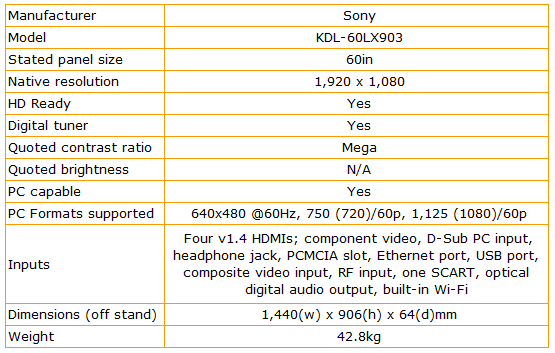
How we test televisions
We test every TV we review thoroughly over an extended period of time. We use industry standard tests to compare features properly. We’ll always tell you what we find. We never, ever, accept money to review a product.
Trusted Score
Score in detail
-
Features 10
-
3D Quality 6
-
Value 6
-
Design 9
-
2D Quality 9
-
Sound Quality 7
Features
| Size (Inch) | 60in |
| Display Type | LED |
Physical Specifications
| Height (Millimeter) | 59.6mm |
| Width (Millimeter) | 103mm |

